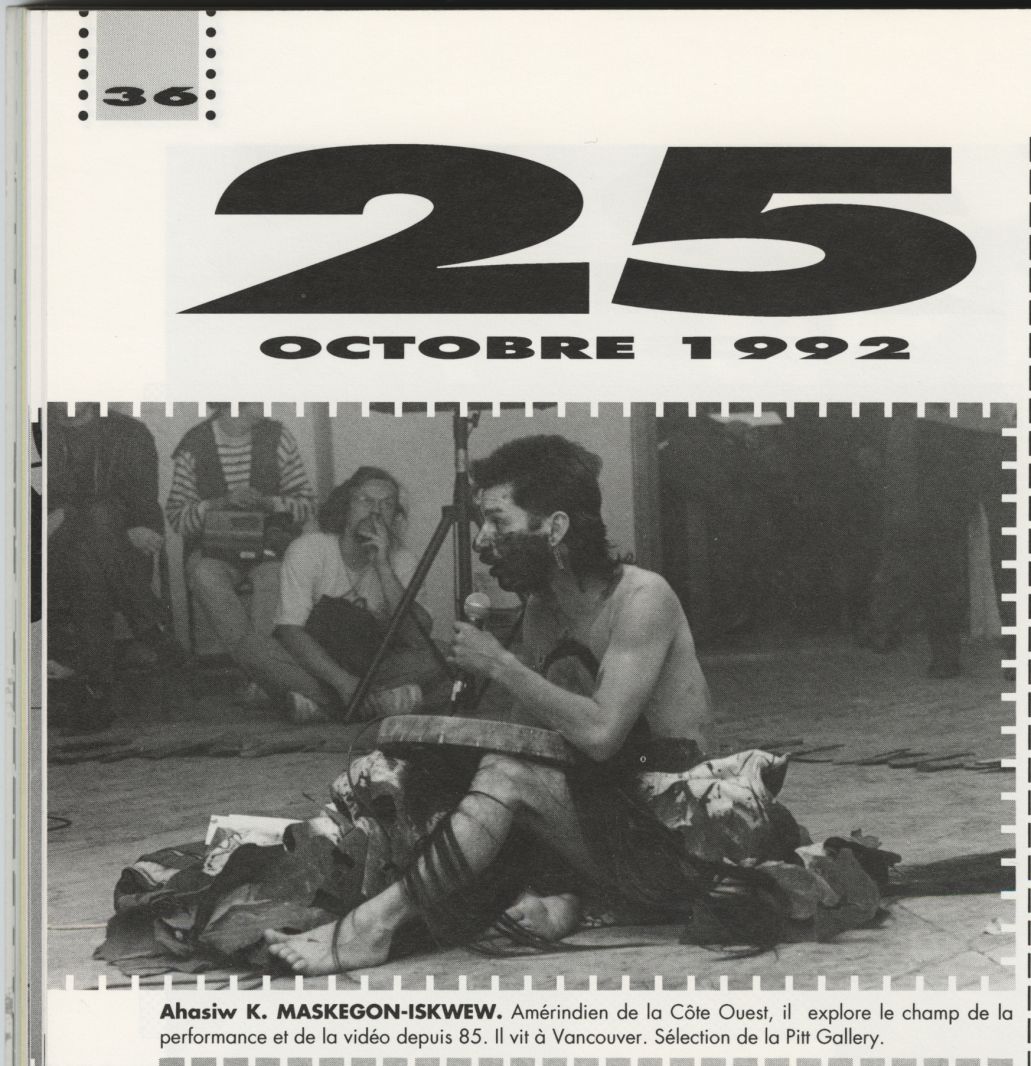A research intervention and performance
May 11, 2019 - 2 PM
Artexte is thrilled to welcome Lindsay Nixon and Adrienne Huard for a research intervention in the Artexte collection. Nixon and Huard will conduct research on the nature of The Archive and on Indigenous art criticism since the 1980s within the context of the project 2s2x: Living Archives. The fruit of their research will be presented at SBC Gallery through a performance and intergenerational conversation.
PERFORMANCE PRESENTED AT
SBC Gallery of Contemporary Art, 372 Rue Sainte-Catherine O. (Suite 507), Montréal, QC
Featuring Arielle Twist, Léuli Eshraghi, and Kite.
We aren’t interested in The Archive, an ethos within which our dykey, fairy bodies have always been unintelligible. We know that queer and trans, queer-trans, and erotics have always existed here. But, by putting our freaky kin and ancestors in the closet (perhaps more aptly described as the archive drawer), the môniyâw-iyinak were willing us to die.
We are interested in the idea of many archives. What would, could, an anti-archons archive, a living archive, an Indigenous (orgasmic) archive, be? How can we pervert The Archive to find what Anne Stoler has termed minor histories: reading between the lines, seeing beyond the veneer, of those objects about us (so dear to those who will us to die), to instead find beautiful, Indigenous life? Drawing from Artexte’s collection, we will pull Indigenous art criticism from the 1980s onward and pose an intergenerational conversation by animating the texts. With our olders, Elders, mentors, ancestors, and all those who paved the way for us ever in our hearts and minds, we will locate the “queer,” “trans,” and “sexy” in the Indigenous art archive that have been restrained for too long.
About the program at SBC Gallery of Contemporary Art:
2s2x: Living Archives is curated by Lindsay Nixon, Adrienne Huard, and Dayna Danger for gijiit. gijiit is a curatorial collective based in Tio’tia:ke and Tkaronto, concentrated on community-engaged Indigenous art dealing with themes of gender, sex, and sexuality.
It was apparently Derrida (but a Black woman probably said it better first) who described archive fever as the môniyâw-iyinak obsessive compulsive death drive, found “in” this ethos so lovingly called The Archive (“in” being the operative term). Derrida was concerned with the Latin origins of the word archive—archivum or archium—derived from the Greek arkheion meaning a house, a domicile, an address, or the residence of the superior magistrates. The archons were those given powers and command over the archivum or archium. The archive is the movement of bodies, objects, and ideas from the public into private, authoritative ownership. Archive fever is the deadening of, the never-ceasing death drive inflicted upon, all that, those, contained within its hallowed walls. What would it mean to take our bodies, our ways of loving, fucking, and being, out of the archive; to set ourselves aflame with an orgasmic fever, instead? To spark new life. To release Indigenous desire from its confines.
